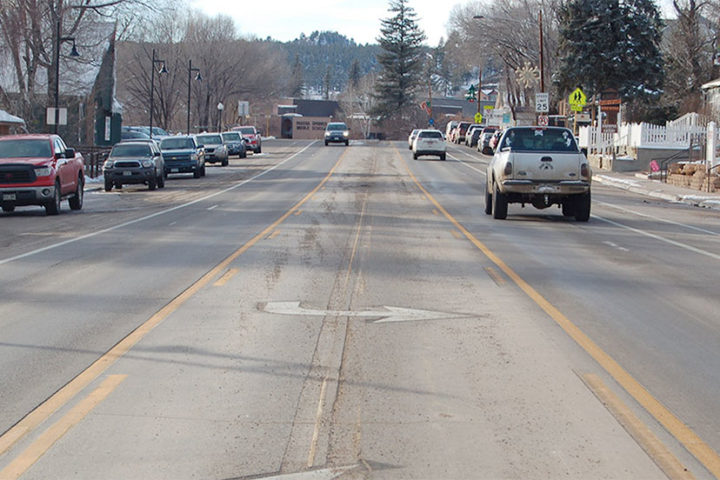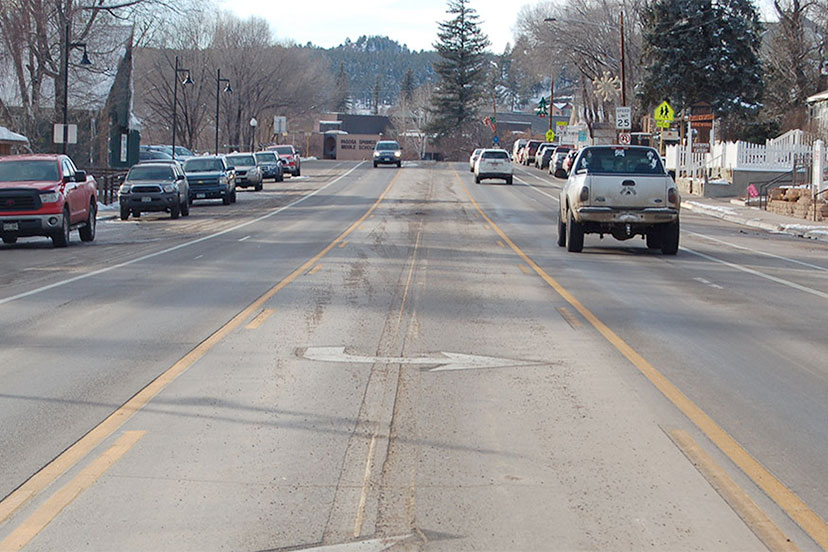Never, in a million years, did the community leaders in Pagosa Springs imagine such a situation.
Too many tourists? The idea seems unthinkable.
But maybe, some of us knew it was coming… all along?
Perhaps the Pagosa Springs Town Council also knew it had been coming, all along… as they listened to local motel owner Annie DeMille speaking via Zoom, at the Council’s June 17 regular meeting.
Ms. DeMille is a member of an ad hoc downtown business organization that has been discussing the problems facing local businesses, as Pagosa becomes overrun with visitors during what seems to be playing out as a repeat of last year’s record tourist numbers. We had just heard a brief explanation of the business group’s intentions from Motel SOCO co-owner Colin Gilbertson.
The implications from Mr. Gilbertson: We have concerns, but we want to be helpful and non-aggravating.
Ms. DeMille — who, with her husband Tony, operates the Nightingale Motel at the east end of downtown — took the conversation a bit further.
“Thank you guys, for your time. As Colin said, we’re a group of small business owners, and we’ve been getting together to talk about issues that we think are important for Pagosa. And the first thing we wanted to bring to your attention is traffic.
“I think we can all agree that it is increasing in Pagosa, to unsafe levels. This has been a major concern for years. We looked through some old studies, and in the Downtown Master Plan from 2007, the Town stated that ‘an inevitable increase in traffic volumes over time promises to further complicate an already challenging situation.’ They talk about ‘congestion, turning movements, and safety were all issues that local residents and businesses expressed as major concerns…’ Like I said, this was in 2007.”
You can download the pertinent section of the Downtown Master Plan here. (Ms. DeMille is referring specifically to pages “2-3” through “2-5” of that plan.)
“I grew up here, and I think we can all agree, with the increase in tourism and people moving here, it’s getting pretty unsafe.
“In 2010, Pagosa Springs Access Control Plan states, ‘Without prudent action by the public agencies, there’s an increased probability that safety and mobility of US 160 will degrade to unacceptable levels.’
“And I feel like, eleven years later, we can agree that we’re really reaching that.
“We, as a group, want to express that we hope the Town Council and everyone can be pro-active in situations like this before it’s too late…”
Ms. DeMille recalled a couple of pedestrian fatalities when she was growing up here.
“The tourists are coming into town, and we see how it’s becoming unmanageable. This last month, during Memorial Day weekend, we all had record numbers, and we’re expecting that again this summer. We know that ability to pull out of driveways, or anywhere there’s not a traffic light, is almost impossible. Crossing on foot can be unsafe.
“I just got reported to Booking.com — I own the Nightingale Motel, and they reported us as an ‘unsafe location’. And when we pressed the customer, they said it was because of the traffic. They requested a full refund, and we had to give that.
“We really want to encourage the Council to look at partnering with some group, to come up with a cohesive traffic plan and maybe include that in the current Land Use and Development Code update…”
Ms. DeMille’s suggestions included hiring an outside consultant to create a professional traffic plan.
The Town Council has since scheduled a work session, to meet with Ms. DeMille’s business group and hear the group’s ideas in more detail.
But the business group is probably barking up the wrong tree, if they are concerned about the traffic on Highway 160… the street that serves Nightingale Motel and Motel SOCO. Highway 160 traffic decisions are the responsibility of Colorado Department of Transportation (CDOT), not the Town government.
A few short years ago, the stretch of Highway 160 that passed in front of the Nightingale Motel was four lanes — two westbound and two eastbound. Traffic moved rather smoothly, even during the busy summer season.
Then CDOT announced plans to “re-stripe” the highway, and explained that they would be adding “bike lanes” and a center turn lane. In order to accommodate these new lanes, the vehicle travel lanes were reduced to one in each direction, between the 1st Street bridge and the Middle School. At the Middle School, the highway converts back to four lanes, and the “bike lanes” disappear. I am putting “bike lanes” in quotation marks, because over the past four years, I believe I have seen a total of two bicycles using those lanes on Highway 160. Sensible people ride their bikes on Lewis Street instead.
At last night’s Town Planning Commission meeting, we heard that CDOT is now planning to carry the “one-lane-in-each-direction” striping pattern all the way through downtown.

I doubt anyone can say, with certainty, whether CDOT’s new striping pattern has contributed to the problems entering or exiting the Nightingale Motel. It’s quite possible that the problems would be just as bad, or even worse, if CDOT had left well-enough alone. It’s quite possible that Highway 160, and Pagosa Springs as a whole, are — thanks in part to COVID-19 — now being overrun, and ruined, by tourists, no matter how you stripe the roads and no matter how you tax the vacation rentals.
What is fairly certain: the Town government has very little control over the future of Highway 160. The Town maintains and controls all of its neighborhood streets that connect to the main highway, but the CDOT bureaucracy controls the Main Road.
Another thing that’s fairly certain: the Town and County governments have poured millions of dollars into tourism promotion over the past two decades, and have done very little, in the meantime, to diversify the economy or deal with the resulting housing crisis. Pagosa Springs has been converted from a funky, working class town into a “destination”, and businesses like Motel SOCO and Nightingale Motel are now dealing with — and benefiting from — the result.
There are many enormously expensive (and impossible) solutions for dealing with the inconvenient and perhaps ever more dangerous summer traffic through downtown.
There’s also one very simple solution. Stop promoting tourism.

